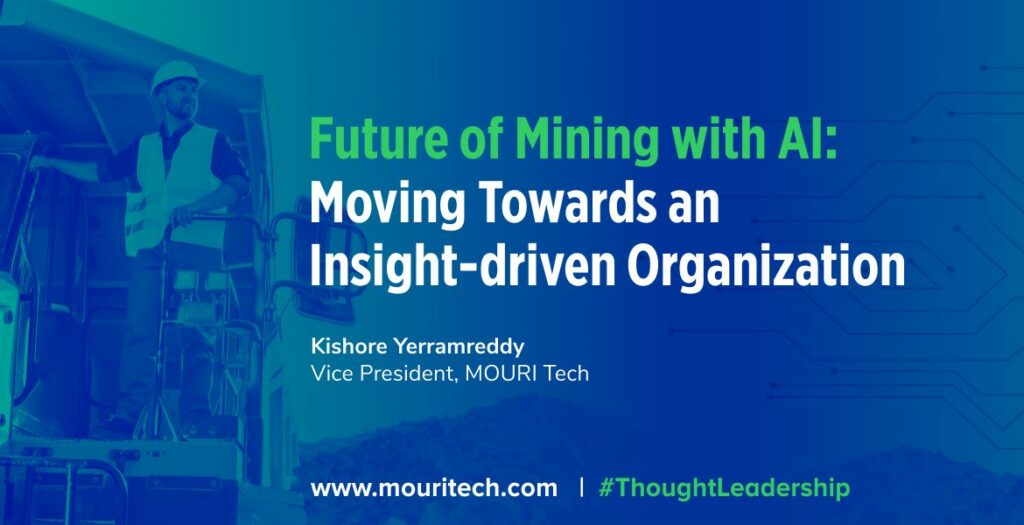The thought of a mine brings forth pictures of a dark underground tunnel with metallic shafts and lights fixed on helmets that cut through the subterranean darkness. This scene makes it almost impossible to picture new-age technology like artificial intelligence (AI) finding its usage in mining. For the mining industry, the efficient extraction of raw materials will always trend. While the total operating expenses of the top mining companies worldwide reach an astounding USD 15 billion, the human contribution to the mining sector is undeniably indispensable.
Research by McKinsey indicates that by 2035, the age of intelligent mining achieved through autonomous mining using data analysis and digital technologies like artificial intelligence (AI) will save between USD 290 billion and USD 390 billion annually for mineral raw materials producers.

“The mining industry faces crucial challenges to which AI offers the most viable solutions”
– Kishore Yerramreddy Vice President, MOURI Tech
However, the power of AI is that it aims to imitate the human process of learning and problem-solving. This mechanism allows it to be utilized in any situation where progressive and iterative learning can be deployed for problem-solving. Modern mines are mobilizing cutting-edge technologies and sophisticated processes to amplify output, reduce their environmental impact, and ensure employee safety. Regardless, the mining industry faces crucial challenges to which AI offers the most viable solutions. Let’s try and understand how.
Overcome Operational Challenges With AI
Some of the key factors through which AI can support the mining sector to stay on course are:
1. Quicker Data Processing
Manual data collection increases processing time and is error-prone. Implementing machine learning-based methodologies can speed up the delivery of data results and minimize errors.
2. Enhanced Health and Safety Measures for Workforce
AI can be optimized to reproduce simulated environments where workers can practice their abilities. A team of skilled mine staff means fewer accidents and higher risk reduction.
3. Employing Neural Networks for Predictive Maintenance
Artificial neural networks can help ascertain mining equipment’s maintenance needs and enable the quality assessment of excavated ores with greater accuracy. These networks can also be leveraged to detect and allow only those substances that fulfill the criteria to reduce operational costs and prevent human errors.
4. Build Beginners’ Strategy
AI can also present a detailed blueprint for organizations venturing into the sector to identify vital opportunities and devise sustainable short and long-term business strategies.
Additionally, AI helps coordinate organizations’ goals with the industry’s ground realities, thus facilitating improved outcomes.
Adopting any digital technology may be strained with objections and challenges, right from transition periods lacking measurable outputs to a gamut of concerns related to data quality, organizational stamina, lack of understanding, and capabilities to deploy the technology. Nonetheless, the increasing testimonies of their advantages indicate that AI‑based technologies in the mining industry are here to stay. They enable enterprises to make better and accurate decisions quicker, ensure health safety, improve efficiencies, and ascertain that human errors are almost inconsequential, helping create smaller environmental footprints.
MOURI Tech is at the forefront to cantilever the power of AI to empower decision-makers with the perks of root-cause analysis and predictive insights. Our human-centric AI is developed, ensuring the critical philosophy of coherence between humans and machine capabilities at its essence.
About Kishore Yerramreddy: Director – Vice President, MOURI Tech






